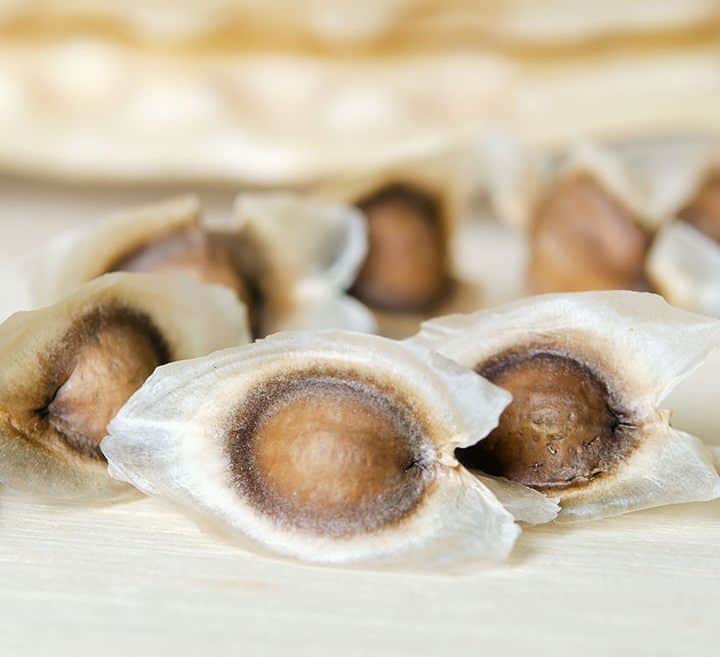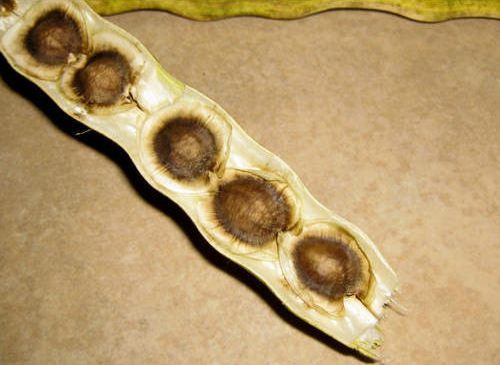We have already spoken about moringa on other occasions. Today we are going to focus on moringa seeds, their uses, properties and health benefits, as well as some other interesting uses that have recently been discovered.

Contents
benefits of moringa seeds
It should be noted that moringa seeds offer enormous benefits in the fight against various ailments, in addition to nutrients, among which it is worth highlighting enormous amounts of vitamin C and vitamin A. In fact, it is said that they contain 10 times more vitamin A than carrots and 7 times more vitamin C than oranges.
This mixture is made into a special cocktail as an antioxidant supplement, which also helps boost the immune system. Other notable uses are that:
- They help with prostate health
- May be useful for erectile dysfunction
- Helps improve fertility
- It is a supplement that can help improve blood sugar control
- Fights premature aging, promotes healthy skin and hair
- Has antibacterial and antifungal properties
- Its high fiber content is very good for treating constipation
- May help lower blood cholesterol levels
Produce clean and cheap water with its seeds
The lack of access to clean drinking water it’s a big problem for many people around the world, and their only recourse is to drink the water they have on hand, which is often contaminated and dirty.
One of the big problems with providing clean water to communities is the cost of the technology to do so, but a new method of water purification using only sand and moringa seeds could be the answer to a cheap and sustainable drinking water.
A few years ago, researchers at Pennsylvania State University conducted several studies to sanitize water, but the processes used in these studies were either too expensive or infeasible for producing drinking water.
Later, the team set out to develop a cheaper and easier way to use moringa seeds to purify and clean water for sustainable drinking water.

The study in question found that by using moringa seed extract (which contains the positively charged protein), it binds to sediment and kills microorganisms, in conjunction with negatively charged sand. They were able to produce potable and storable water without expensive or complicated technology.
The resulting compound was named “F-sand”, they demonstrated its effectiveness in capturing lab-bred adult E. coli bacteria, to which the compound was able to damage their membranes (thereby killing them). F sand was also able to remove sediment from water samples. The results open the possibility that F-sand may provide a simple and locally sustainable procedure for the production of potable water suitable for storage.
Stephanie B. Velegol, Ph.D., lead experiment author
Moringa oleifera is already grown to produce biofuels, food and medicine in some equatorial regions.
Low-cost sustainable drinking water using only seeds and sand? It sounds like a winning formula. With more than a billion people without regular access to safe drinking water, this new method could save the lives of many of the world’s citizens.
Hoping it goes beyond the study stage, to be extended to real-world application. For more information, listen to this podcast on the water purification study.
How to grow the plant
The plant can be grown from moringa seeds or by cutting young branches. Since it’s easier to get the seed, this will be the method we’ll cover here.
It can be planted in a pot or directly in the ground, remember that it is a tree that grows a lot and very quickly. If they are going to put it in a pot, it must be quite large, around 40 liters or more, because when the plant is young it is quite fragile and it is not advisable to transplant it.
Loose soil is best in this case, and to achieve this you need to mix it with sand in a ratio of 1 part sand to 3 parts soil. They are planted a centimeter or two deep. It must be watered with care, fairly little, and prevent the soil from becoming waterlogged.
It is convenient to put two or three moringa seeds and when they have about 3 or 4 pairs of leaves, choose the plant that looks the strongest and remove the others. When planting, it is advisable to leave a stake in place from the beginning because at the beginning it is a very weak plant and it will need it.
Do you know moringa seeds and what are they used for? Do you have any experience of using it? As we always say, leave it in the comments, may we and our readers benefit from contributions that expand our knowledge of medicinal plants.
IMPORTANT: This information is intended to supplement, not replace, the advice of your physician or healthcare professional and is not intended to cover all possible uses, precautions, interactions, or adverse effects.
This information may not be tailored to your specific health situation. Never delay or neglect seeking professional medical advice from your physician or other qualified health care provider because of something you have read in ecothings. You should always consult a healthcare professional before starting, stopping or changing any type of treatment.